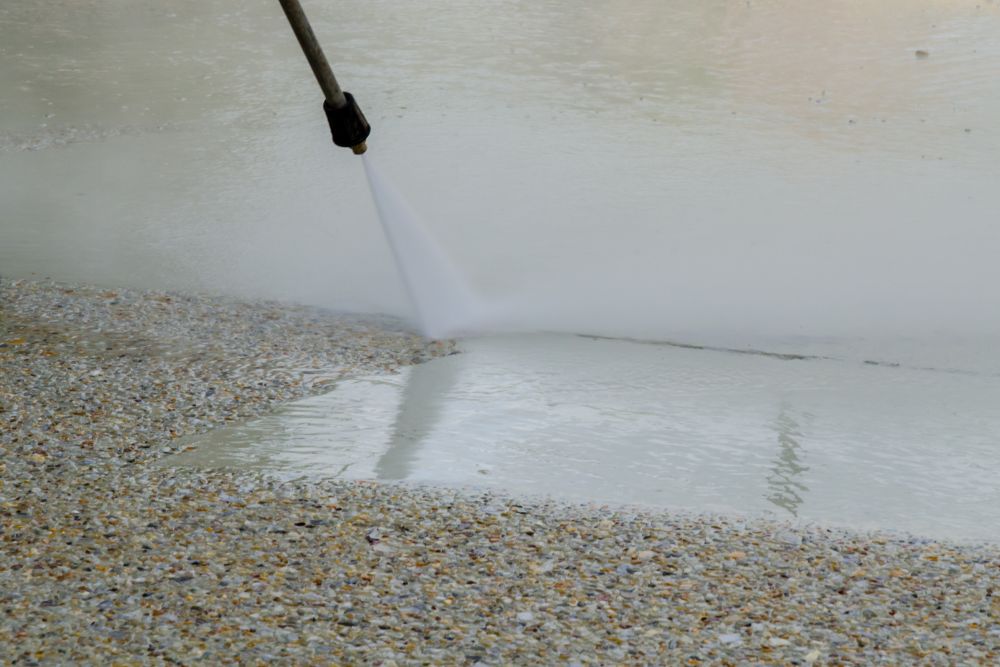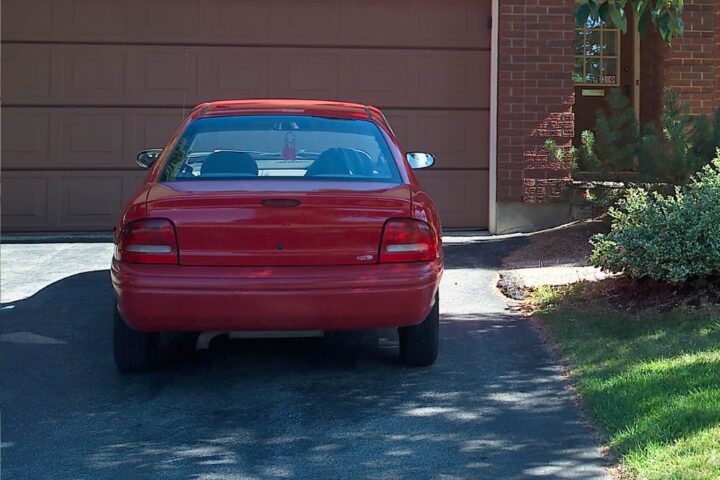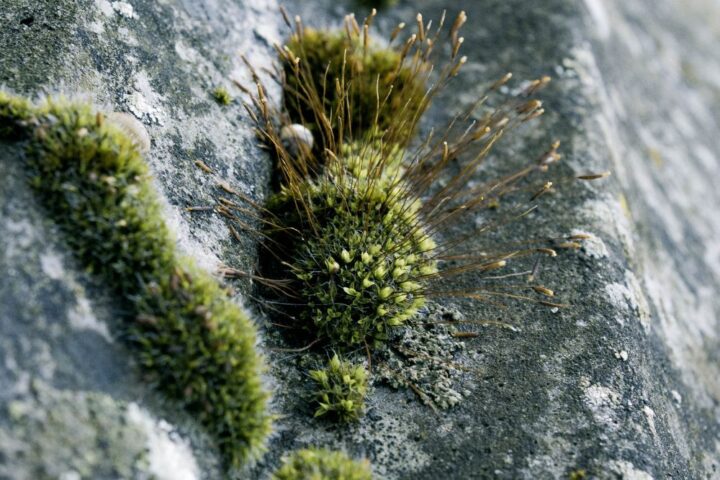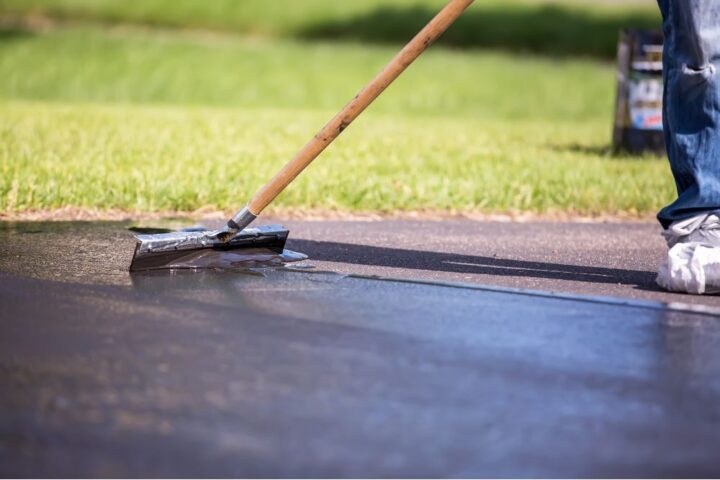Maintaining the integrity and aesthetics of exposed aggregate concrete requires a comprehensive understanding of effective cleaning techniques. This involves regular sweeping, rinsing, and diligent stain removal. Persistent marks may require the use of a power washer, a concrete-safe cleaner, or a potent solvent poultice. For grease or oil stains, innovative solutions involving microorganisms, enzymes, and oxygen may be employed.
Moreover, a crucial aspect of this upkeep procedure is sealing the surface to prevent spalling, staining, and abrasions.
This guide provides in-depth insights into the practical and efficient methods to clean exposed aggregate concrete, ensuring longevity and preservation of its aesthetic appeal.
Key Takeaways
- Exposed aggregate concrete is a popular choice for driveways, patios, and walkways due to its durability and aesthetic appeal.
- Regular cleaning and sealing are necessary to maintain the appearance and protect the concrete from damage.
- Sweeping with a stiff-bristled brush and using a pressure washer are effective techniques for regular cleaning.
- Stubborn stains can be addressed with strong acids, driveway cleaning solutions, chemical degreasers, and poultices with strong solvents.
Understanding Exposed Aggregate Concrete
In the realm of exposed aggregate concrete, understanding its susceptibility to various stains is crucial for effective maintenance and cleaning. Unlike regular concrete, the textured surface of exposed aggregate concrete can trap dirt, grime, and stains, making it more challenging to clean. Bore water, oil and grease, tyre rubber, and algae and mould are all common contaminants that can stain an exposed aggregate surface.
Understanding exposed aggregate concrete involves knowing the appropriate cleaning techniques. Strong acids are often required to remove bore water stains, while household products can tackle oil and grease stains. Chemical degreasers can eliminate tyre rubber marks on exposed aggregate driveways. Sweeping, careful use of water, application of cleaning solutions, and targeted removal of tough stains form the pillars of effective cleaning.
Safety is a paramount concern during cleaning. Protective clothing, adequate ventilation, and cautious handling of cleaning chemicals are all necessary precautions. Professional pressure washing is another option to consider. It can improve the appearance of the exposed aggregate concrete, prevent organic growth, and maintain overall cleanliness, thus preserving the aesthetic and functional integrity of the concrete surface.
Essential Cleaning Tools and Supplies
Several essential tools and supplies are required for effective cleaning of exposed aggregate concrete. A brush or broom is fundamental for surface cleaning, helping to sweep away loose debris and dirt. Thus, maintaining the cleanliness and visual appeal of the exposed aggregate.
For deeper cleaning, a water-based cleaner is often necessary. These cleaners are designed to lift and remove stubborn stains, including those caused by oil, grease, or bore water. They work in conjunction with a high-pressure cleaning machine, which provides the force to lift and wash away the dirt. Consider using a machine that has hot water capabilities for optimal results.
In addition, chemical degreasers or household products such as dishwashing liquid or baking soda can be used to target specific stains. When dealing with more persistent stains like algae and mould, a stronger chemical solution might be required. Remember to always wear protective clothing, including gloves, boots, and a mask, when using these substances to ensure safety.
These essential cleaning tools and supplies, when used correctly, will ensure the longevity and beauty of your exposed aggregate concrete.
Regular Cleaning Techniques
For the purpose of maintaining the aesthetic and structural integrity of exposed aggregate concrete, regular cleaning techniques play a pivotal role. These techniques aim to handle common contaminants like dirt, grime, oil, and grease that can dull the vibrant colours and patterns of an exposed aggregate surface.
Among the regular cleaning techniques, sweeping the concrete driveway with a stiff-bristled brush is paramount. This simple step removes loose debris that can cause surface damage over time.
Equally important is the use of a pressure washer. This device expedites the exposed aggregate surface cleaning process by removing embedded grime and stubborn stains. However, it should be handled with care to prevent surface damage.
Furthermore, consider these steps:
- Use a driveway cleaning solution to tackle oil and grease stains. A mixture of dishwashing liquid or baking soda works well.
- Employ a hard broom or high-pressure cleaner to eliminate tyre marks.
- Apply a chemical solution to deal with algae and mould stains.
Addressing Stubborn Stains
Despite diligent cleaning, exposed aggregate concrete can sometimes develop stubborn stains that require more intensive treatment methods. Addressing stubborn stains from your driveway or any other exposed aggregate surface can be a challenging task. Stubborn stains, such as bore water stains caused by minerals, oil, and grease stains, tyre rubber marks, and algae and mould stains, are often difficult to remove.
Exposed aggregate driveway cleaning can involve the use of strong acids to break down bore water stains. For oil and grease stains, applying a driveway cleaning solution using household products like dishwashing liquid or baking soda can be effective. Tyre rubber marks may require a strong chemical degreaser and the use of protective clothing for safe application. Cleaning your exposed aggregate from algae and mould stains might involve using a chemical solution and a hard broom or a high-pressure cleaner.
For older or deeply embedded stains, consider using a poultice with strong solvents. If these methods do not yield results, seeking professional help could be the best course of action. Remember, the key is to address stubborn stains promptly to maintain the aesthetic appeal and structural integrity of your exposed aggregate concrete.
Microorganism Cleaning Method
Utilizing a unique approach, the microorganism cleaning method employs billions of bacteria to effectively remove stubborn oil and grease stains from exposed aggregate concrete surfaces. This environmentally friendly method harnesses the natural power of microorganisms that consume oil and its derivatives as their food source.
The cleaning process is initiated by applying a solution rich in microorganisms onto the stained surface. These tiny creatures then work their way into the aggregate, breaking down the oil or grease into simpler substances. As a result, stubborn stains that conventional cleaning methods struggle with are efficiently addressed.
This approach to cleaning offers several key advantages:
- It is entirely natural and environmentally friendly, causing no harm to the surrounding ecosystem.
- It is highly effective for large stains, employing the same technology used for cleaning oil-soaked beaches.
- Once the microorganisms have consumed all the oil or grease, they die off, leaving a clean, residue-free surface.
Importance of Concrete Sealing
In maintaining an exposed aggregate concrete’s longevity and aesthetics, the importance of concrete sealing cannot be overstated. It is crucial to protect your exposed aggregate, especially in high-traffic areas such as driveways. Concrete sealing acts as a barrier, shielding the surface from potential damage caused by weather conditions, vehicle traffic, and staining materials.
Notably, exposed aggregate driveways are a significant investment, both financially and aesthetically. Hence, the sealing process helps to retain the visual appeal and structural integrity of the surface for an extended period. Proper and regular sealing can potentially extend the lifespan of the surface to twenty-five years.
The importance of concrete sealing lies in its preventive nature. Sealing reduces the risks of spalling, damage from freeze-thaw cycles, staining, and abrasions. It’s a proactive measure to take care of and maintain your investment.
However, the process of sealing needs professional handling for optimum results. Engaging with professional concrete service providers ensures that the job is done correctly and efficiently. If you need assistance with your exposed aggregate concrete cleaning and sealing, feel free to call us. We’re here to help protect and prolong the life of your investment.
Frequently Asked Questions
What Is the Best Way to Clean Exposed Aggregate Concrete?
The best method to clean exposed aggregate concrete involves sweeping debris, rinsing with a hose, and using a power washer with a concrete-safe cleaner for stubborn stains. Sealing the surface aids in preventing future stains.
Do You Need to Acid Wash Exposed Aggregate?
Acid washing exposed aggregate is not always necessary. It is primarily used for stubborn stains or bore water marks. For regular maintenance, simpler methods like sweeping and rinsing with water are generally sufficient.
How Do You Make Exposed Aggregate Concrete Look Better?
To enhance the look of exposed aggregate concrete, consider professional deep cleaning, stain removal, and the application of a high-quality sealer. Regular maintenance, including sweeping and rinsing, also contributes to its overall aesthetic appeal.
Does Exposed Aggregate Require Maintenance?
Yes, exposed aggregate concrete requires routine maintenance to retain its appearance and durability. This involves regular sweeping, periodic washing with suitable cleaning agents, stain removal, and sealing to protect against potential damage and wear.
Conclusion
In conclusion, maintaining the aesthetic appeal and longevity of exposed aggregate concrete requires regular cleaning and sealing. Techniques include sweeping, rinsing, and power washing, with the usage of concrete-safe cleaners or poultices for stubborn stains.
For oil or grease stains, microorganisms, enzymes, and oxygen can be effective. Sealing is pivotal for preventing damage.




